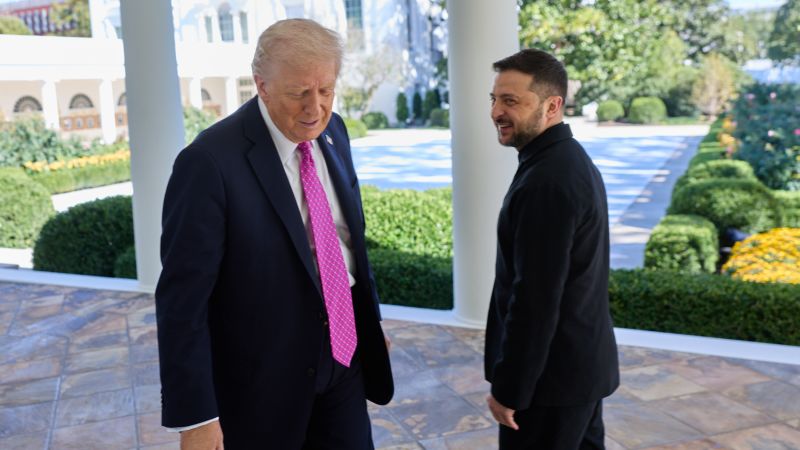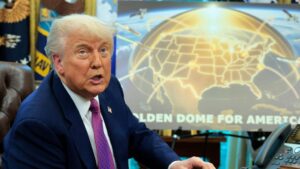
Ukrainian President Volodymyr Zelensky left a meeting with Donald Trump on Friday without securing the long-range Tomahawk missiles he sought to bolster Ukraine’s military capabilities against Russia. Trump, speaking at a White House working lunch, called for an immediate ceasefire between Kyiv and Moscow, suggesting both sides should accept current battle lines rather than escalate the conflict further.
Zelensky’s visit to Washington was aimed at obtaining the Tomahawk missiles, which he believes could significantly impact Russia’s war economy by enabling targeted strikes on critical energy and oil infrastructure deep within Russian territory. During his opening remarks, Trump emphasized the importance of finding a resolution to the war “without thinking about Tomahawks,” stating that the United States “needs” the missiles for its own defense.
Despite describing the meeting as “productive,” Zelensky refrained from discussing the Tomahawk situation in detail. He noted that the U.S. administration is cautious about escalating tensions with Russia.
Hours after the meeting, Trump reiterated his call for both nations to “stop the war immediately.” He stated, “You go by the battle line, wherever it is… You stop at the battle line,” suggesting a practical approach to de-escalation. Trump claimed he had conveyed this sentiment directly to both Zelensky and Russian President Vladimir Putin.
This discussion came shortly after Trump had a phone conversation with Putin, during which the Russian leader reportedly downplayed the impact of Tomahawk missiles on the battlefield. He argued that while the missiles could reach major cities like Moscow and St. Petersburg, their introduction would strain U.S.-Russia relations.
Ukraine’s Strategic Pursuit of Tomahawks
The Tomahawk missile’s range far exceeds that of any weapons currently in Ukraine’s arsenal. While Trump has not explicitly ruled out their delivery, he has expressed reservations. Ahead of the White House meeting, Zelensky suggested a potential exchange of resources, offering U.S. access to thousands of Ukrainian-produced drones in return for the missiles. “They can have our thousands of drones, that’s where we can work together,” he remarked.
Following the meeting, Zelensky held virtual discussions with European leaders, who reaffirmed their commitment to supporting Ukraine amidst ongoing Russian aggression. He expressed optimism about Trump’s desire to bring the conflict to a close, acknowledging the challenges faced in managing geopolitical dynamics, particularly in the Middle East, where Trump has previously been successful.
Despite the discussions surrounding military aid, Trump stopped short of addressing whether Ukraine might need to cede territory in any peace negotiations with Russia. His positions have varied over time; he has previously suggested that “land swaps” could be necessary for a resolution, but later stated his belief that Ukraine could reclaim all occupied territories.
On Friday, Trump acknowledged the complexity of negotiations, hinting at the possibility that Putin might be stalling for time to achieve his military objectives in Ukraine. Nevertheless, he concluded, “I think that he wants to make a deal.”
Zelensky’s visit and Trump’s statements reflect ongoing tensions in the region and the complexities of international diplomacy as both nations navigate the path toward a potential resolution.






